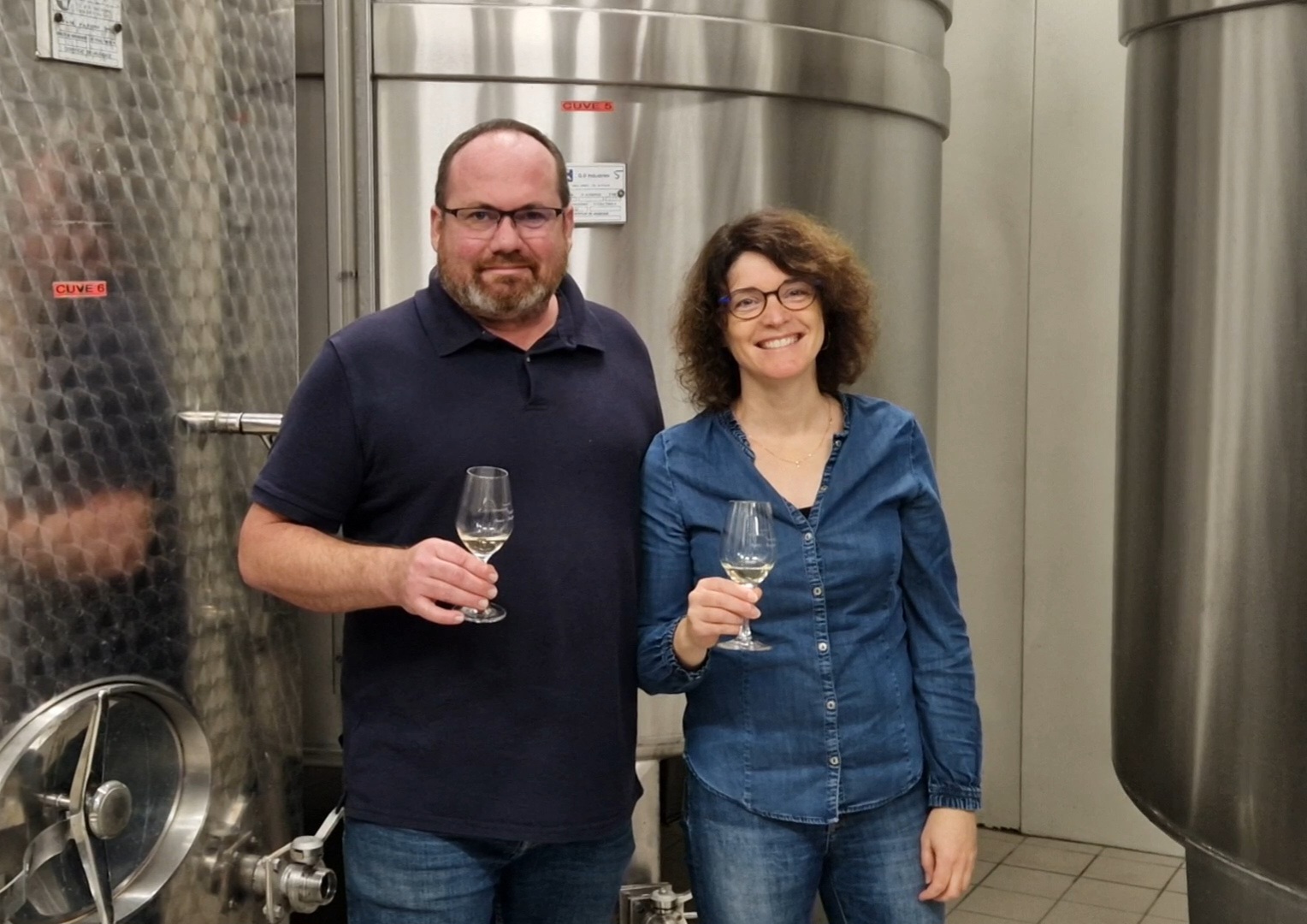Vins de terroirs
They favor long aging periods on fine lees, primarily in stainless steel vats.
Harvest
hey take place in September.

The fruit of a year's work, the harvest is a moment of great intensity.
Goal: to harvest grapes at optimal ripeness.
What is optimal ripeness?
- Chardonnay: balance of sugars and acids / aromatic ripeness
- Pinot Noir: balance of sugars and acids / phenolic ripeness (color and tannins)
Winemaking
-
White wines
Vinification takes place primarily in stainless steel vats, with the exception of a few cuvées, including Premiers Crus and Grands Crus, which are partially vinified in oak barrels.
The entire winery is temperature-controlled. Temperature control is very important to preserve the freshness of the aromas.
After the alcoholic fermentation, we aim to perform malolactic fermentation. Carried out by lactic acid bacteria, it lowers the acidity level of the wines and adds complexity.
Then, the wines are aged on fine lees for 8 to 10 months. Aging the wines in contact with them adds structure and substance. In a way, the wine matures.
red wines
The harvest, fully destemmed, is transferred to vats for a cold prefermentation phase. This allows for the extraction of a beautiful color and fruity aromas.
Twice a day, the juices are pumped to water the pomace cap and extract tannins and color (pump over).
After alcoholic fermentation and pressing, the wines are transferred to barrels. Here, too, the goal is to achieve malolactic fermentation.
Then the wines are aged for 14 to 18 months (half in barrels, half in vats), allowing time for the tannins to soften.
Bottling
We bottle our wines ourselves. We have our own bottling machine.
Equipped with a rinser and a nitrogen system, this machine operates at a reasonable rate of 1,800 bottles per hour, allowing us to produce high-quality work.


